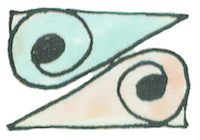The lure of the local: ‘News’ definitions in community broadcasting
Abstract
Journalists and media researchers globally are increasingly expressing concern about trends in the news media industry which would appear to suggest a dire future for quality journalism, and thus democracy, in many developed democratic nations. The US State of the News Media report, now produced annually, regularly reports concerns by journalists and editors—and those who study them—about decreasing investment by news corporations in quality journalism (Pew Centre, 2005; 2006; 2007; 2008). The Australian Press Council has presented its own study to mirror that of the Pew Centre in an effort to report on the Australian context (APC, 2006; 2007). The author has, with colleagues from Griffith University, conducted research into the Australian community broadcasting sector for the past nine years. The research conducted since 1999 has been broad but this article will focus on one element of the research—the news and information services of community broadcasting. The community broadcasting sector is worthy of close investigation, because it is one of the few areas of the Australian media landscape that continues to grow. Importantly, quantitative research into the community sector indicates that 57 percent of the Australian population tune in at least monthly to a community radio station—and more than one in four listen at least weekly (McNair Ingenuity, 2008, p. 4). This article investigates the nature of community news offered by the Australian community radio sector through the perspectives of journalists and producers who deliver the news, and the audiences who access it.
Downloads
Metrics

Copyright (c) 2010 Pacific Journalism Review

This work is licensed under a Creative Commons Attribution-NonCommercial 4.0 International License.















